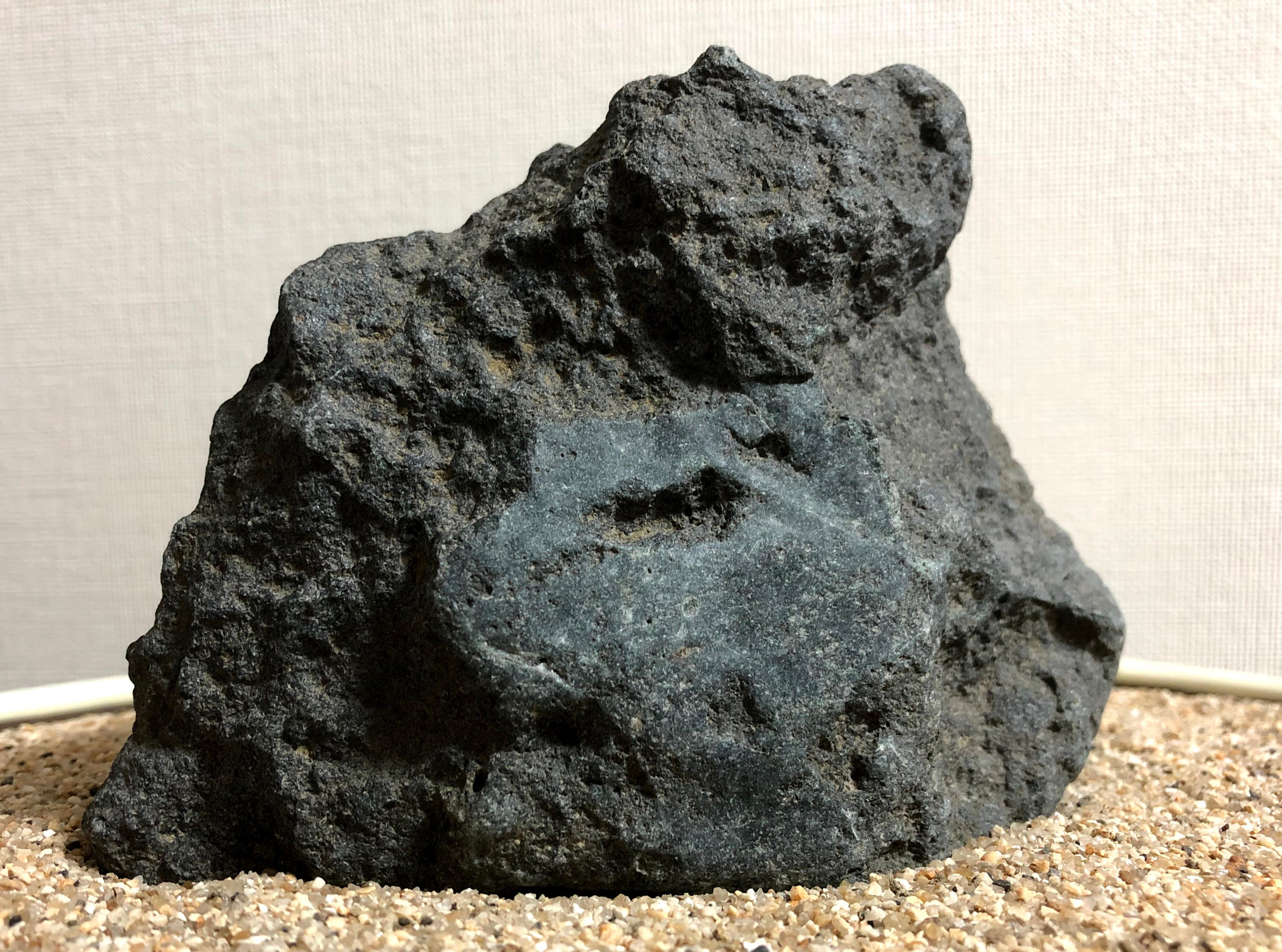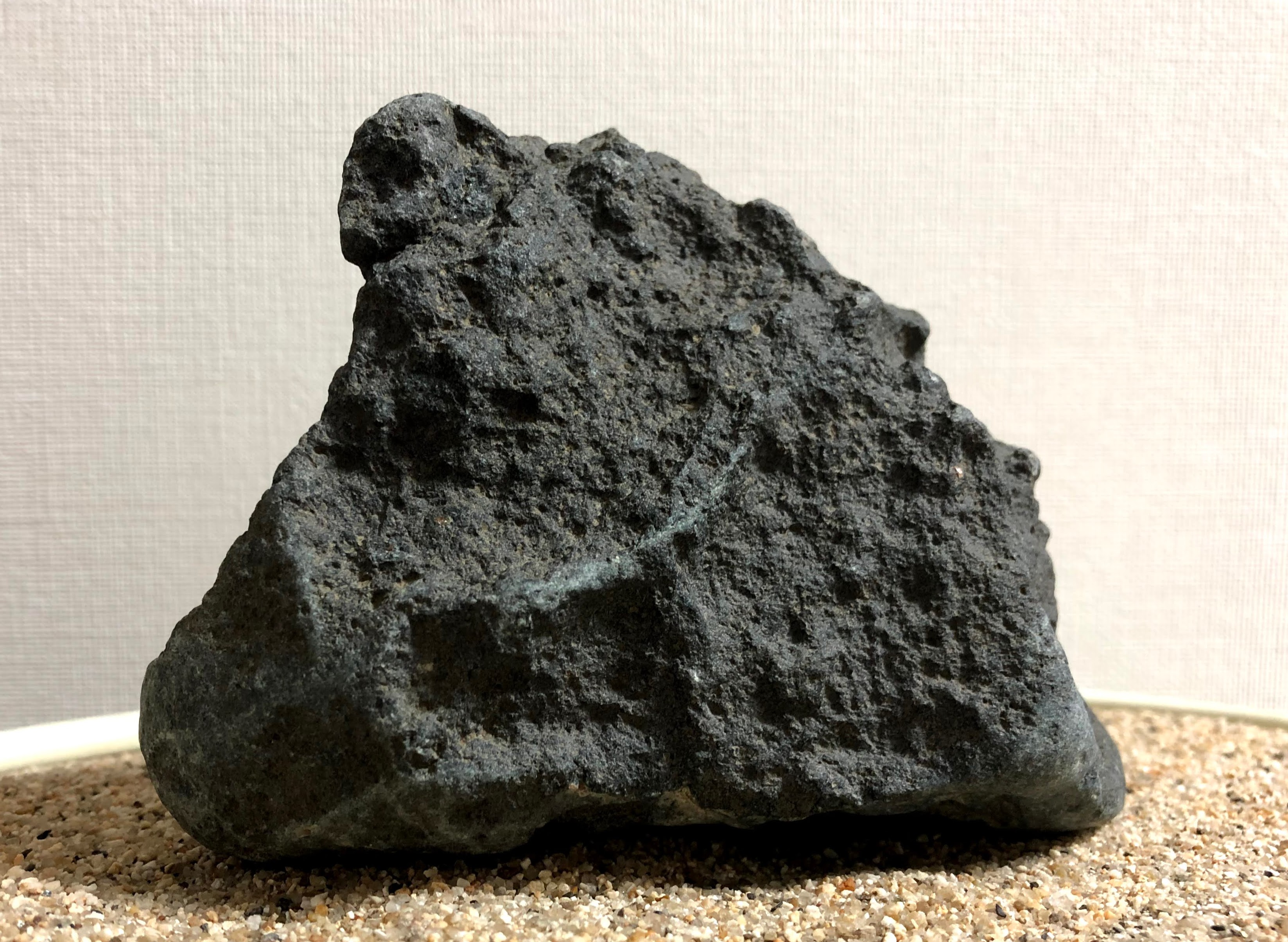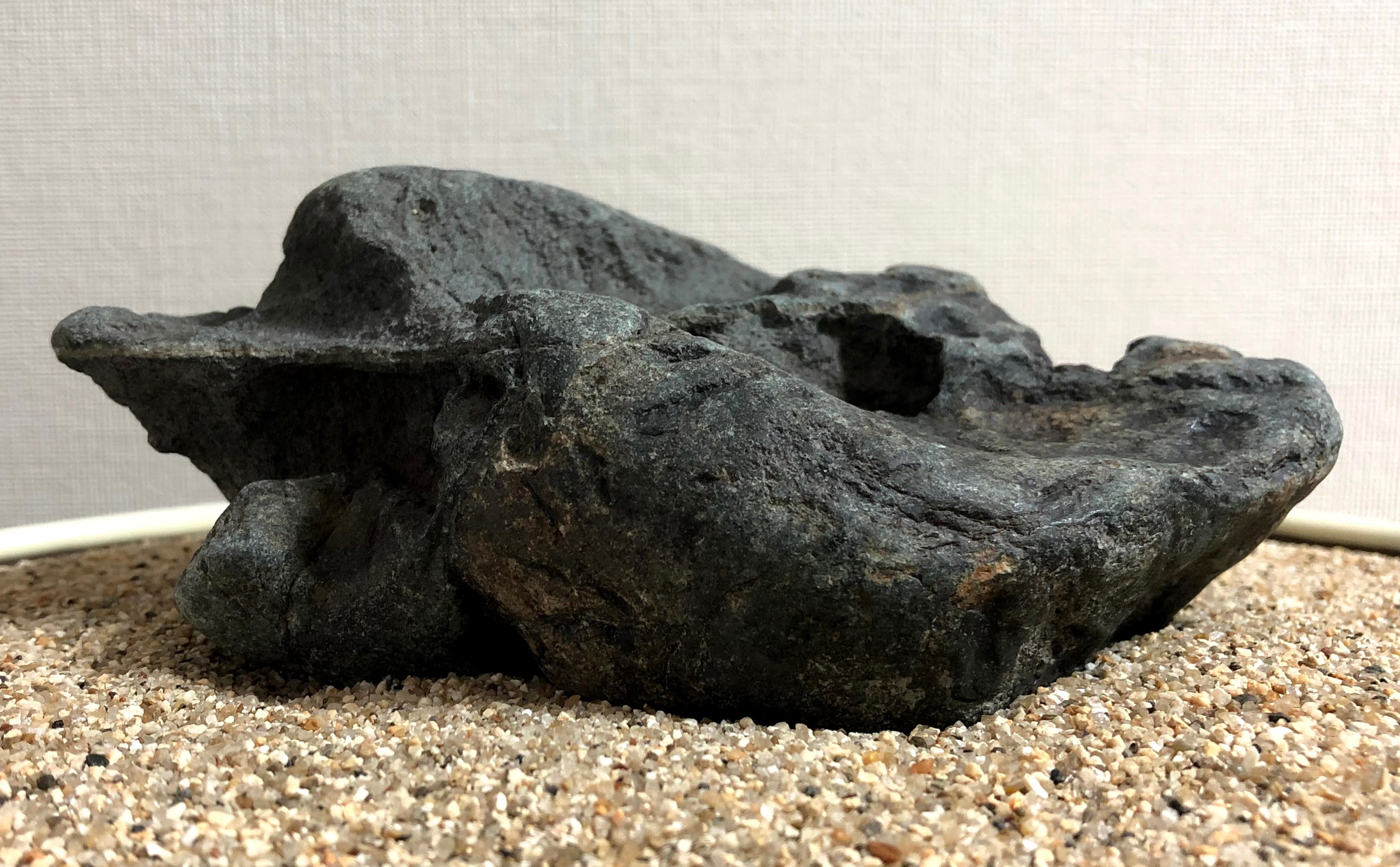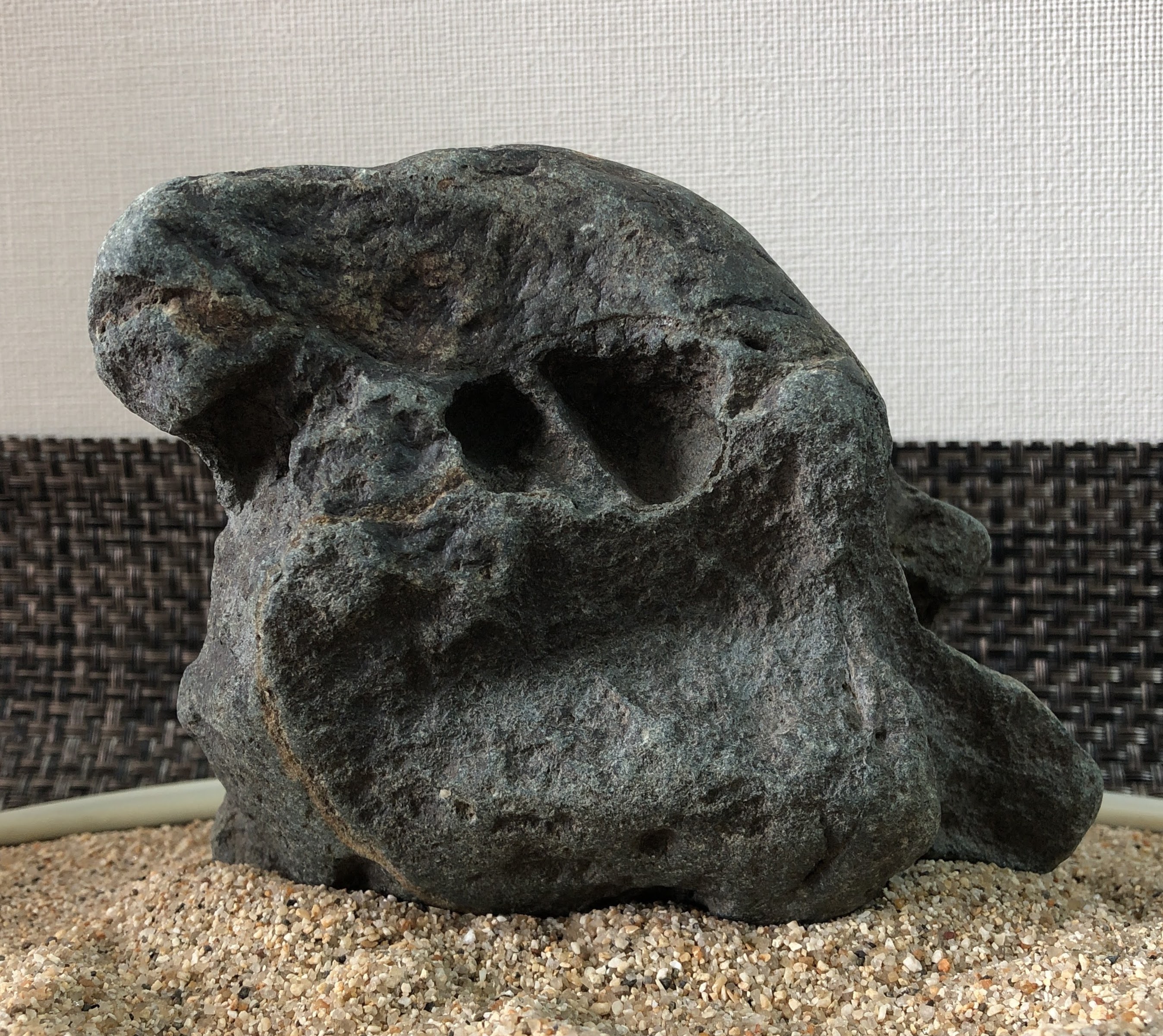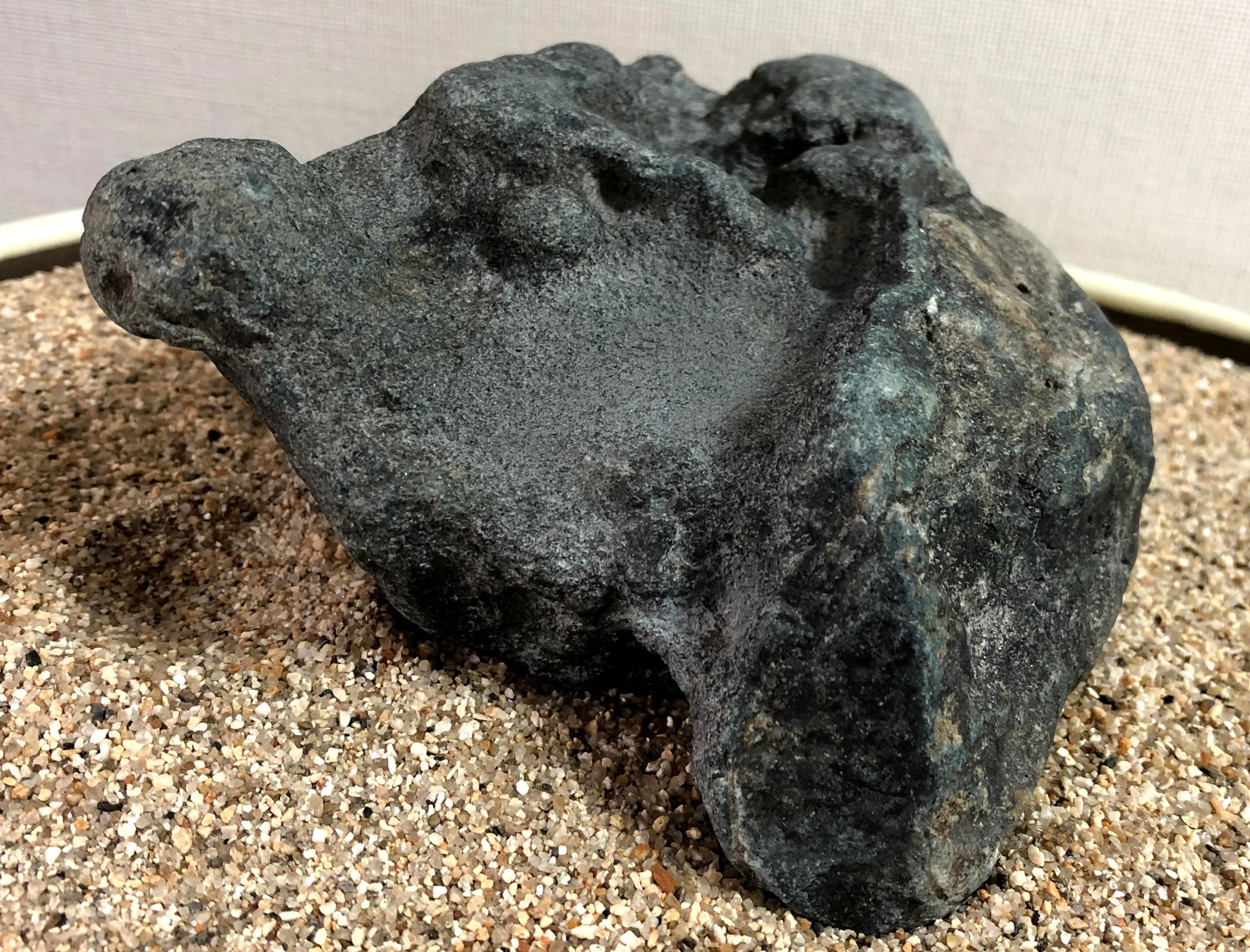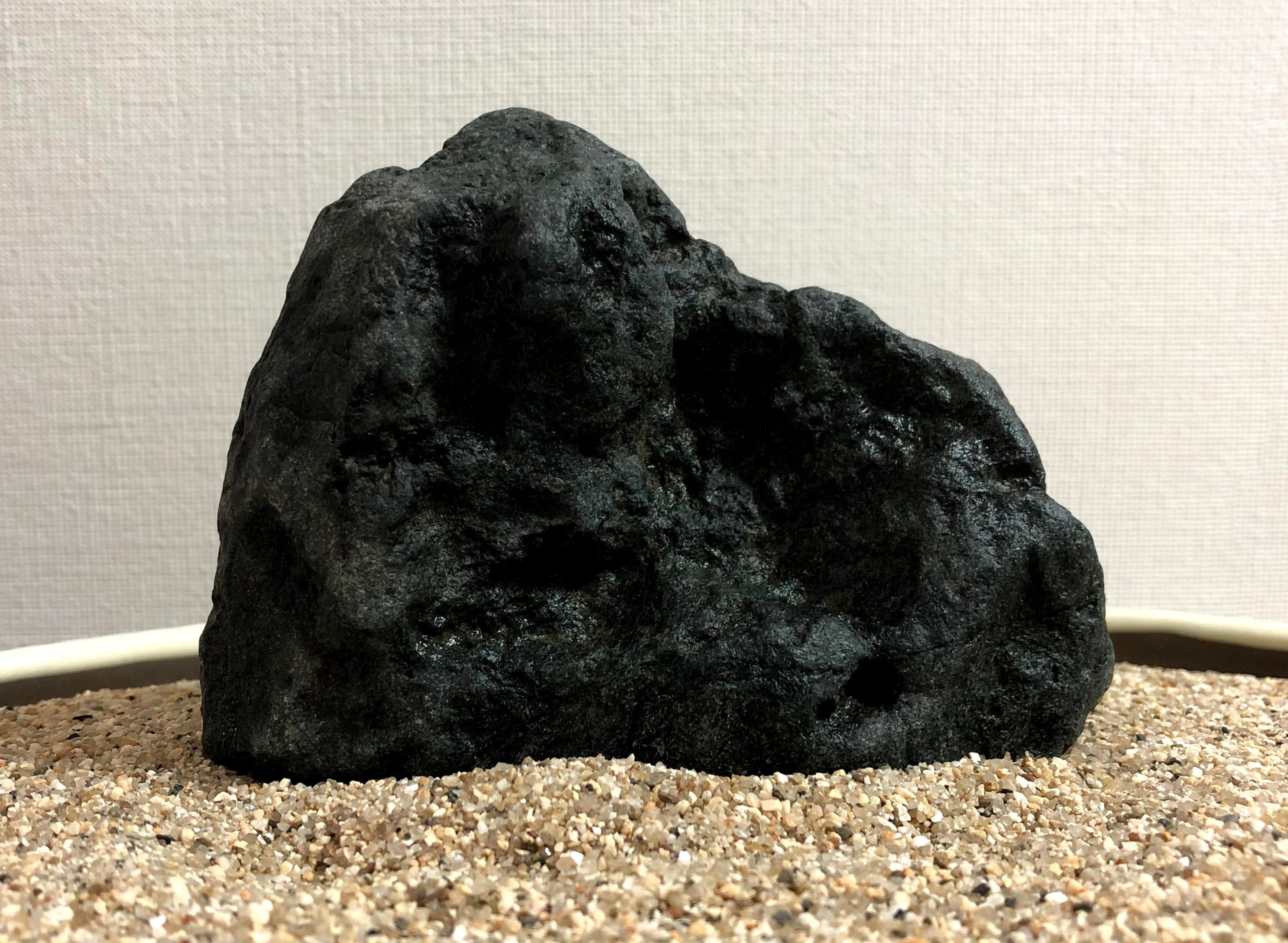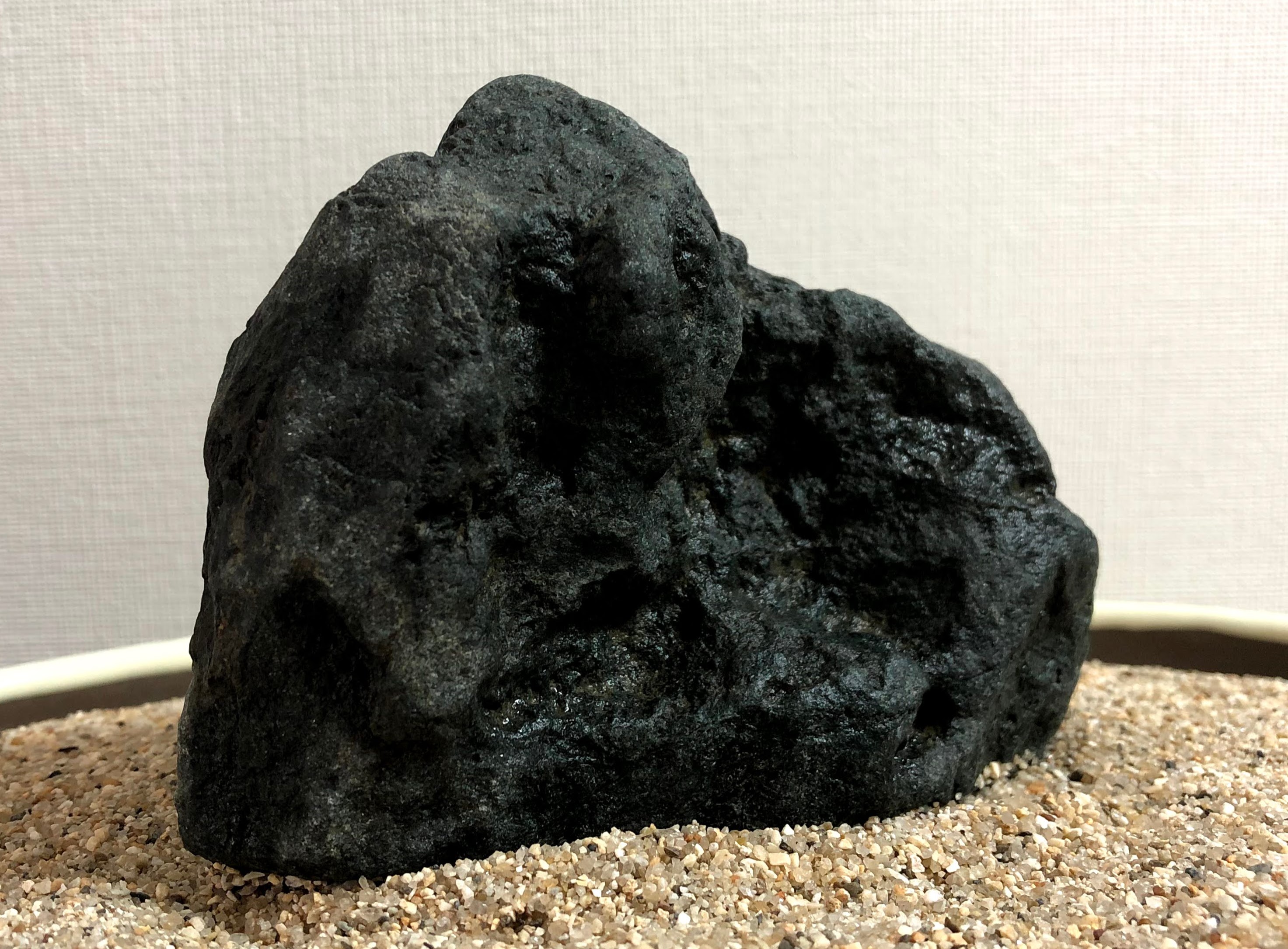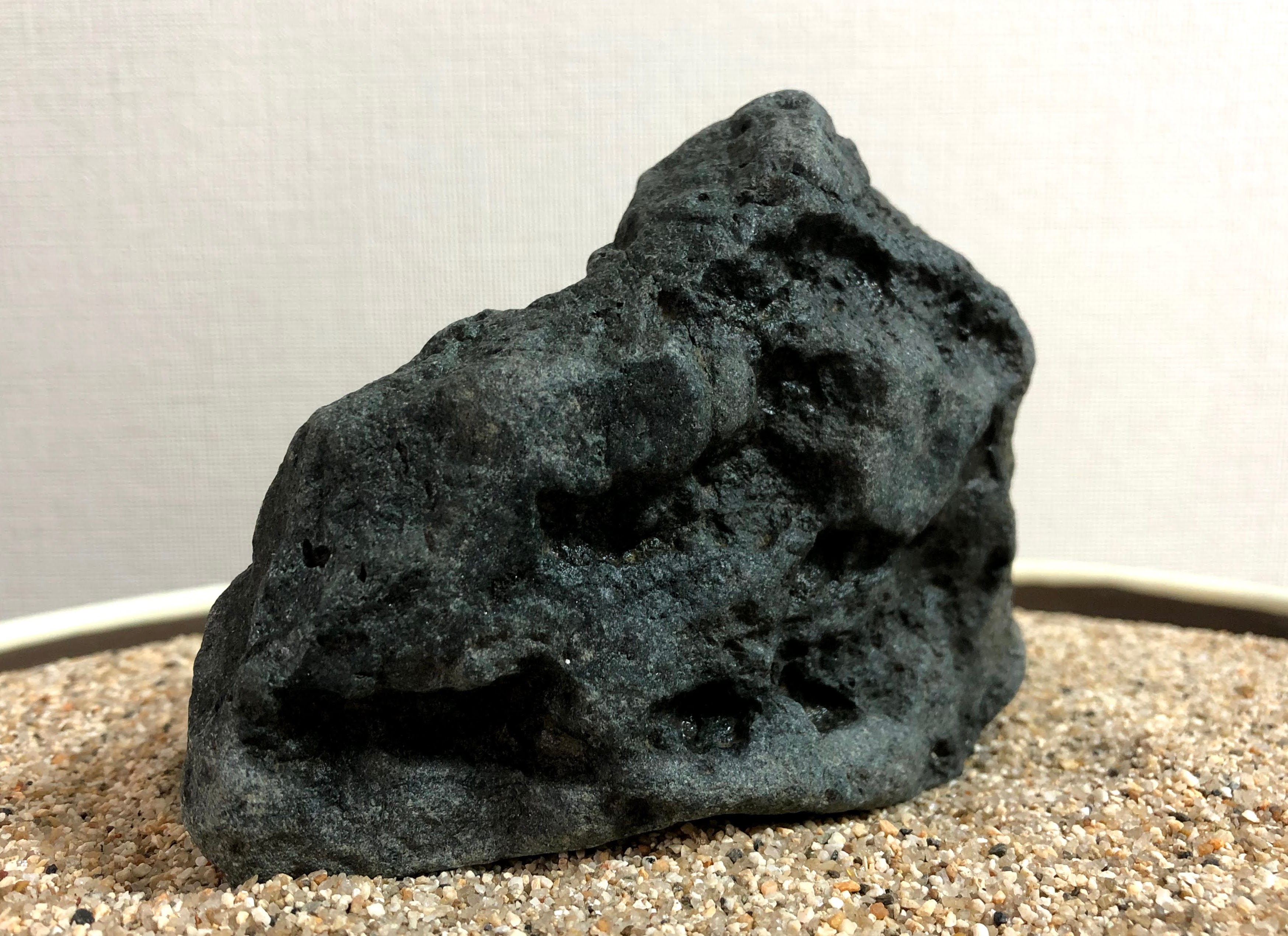Ibigawa-ishi-I, 揖斐川石
Ibigawa-ishi-I
I would like to introduce Ibigawa-ishi here. Ibigawa-ishi is, as its name suggests, Suiseki stones from Ibigawa.
The history of Ibigawa-ishi is quite old as compared with Kamogawa-ishi and Setagawa-ishi. It could be Muromachi period, approximately 1336 to 1573.
The name of Ibi river is considered from Ibi no shou, one of Shoen. Ibigawa-ishi could be spread from Ibi no shou.Once upon a time there were true black stones which can be compared with Kamogawa-ishi and Setagawa-ishi. However, they are already exhausted. In Showa period, it was the last boom in Suiseki, true black is few and therefore, blue black stones or blue stones are majority in Ibigawa-ishi as Suiseki.
Now, after Tokuyama Dam was made, almost all Suiseki stones are few. Tokuyama dam is the largest dam by structural volume in Japan and withholds the country's largest reservoir by volume as well. The dam is quite big so that one village was flooded by the construction of the dam. By the dam, water level is always high steady and controlled, Suiseki stones are few.
Therefore, new good Suiseki stones from Ibigawa are hardly to be expected.
Ibigawa-ishi, blue black is, as its name suggests, outer blue shell and inner black rough portions can be observed.
Another Ibigawa-ishi, blue is almost outer blue shell and its shape is not detailed but abstract by its hardness.
In either case, if white or yellow lines are included, it is not preferred by some people because rust is generated. However, other people say it is the state of having profoundness.
I do not now Ibigawa-ishi black because it is few but it seems to be hard and not so detailed.
I believe that Ibigawa-ishi black stones are stored carefully or it may be distributed without knowing it.
Other than these, from Ibigawa, there are Ibigawa Red stone, Purple clouds stone, Plum blossom stone, and Ryugan. Sometimes, stones from Kasugawa, Kasu river, which is a tributary river, are handled as Ibigawa-ishi because it is difficult to distinguish.
As mentioned above, from Ibigawa, various stones are found, so, I have been thinking what is typical Ibigawa-ishi.
Although I am still studying, it seems to be Blue black and Blue. It looks like Sajigawa-ishi, however, it is not. Sajigawa-ishi is more like mineral but Ibigawa-ishi is more usual stone. Its surface is not usual Jagure but rough and detailed.
By the way, Ibi-ishi, Ryugan including spotted lime-stone, is used mainly in Bonsai for tree root routing. Ibi-ishi is not hard for Suiseki.
Let’s see Ibigawa-ishi:
Ibigawa-ishi - Blue black
This kind of Ibigawa-ishi is quite common recently.
Around the middle, there is smooth blue flat portion and others are rough surface. It is hard stone but blue flat portion is harder than others.
This is back side and almost black rough surface. This kind of rough surface is not Jagure but specific for Ibigawa-ishi.
Ibigawa-ishi - Blue black
This is also Ibigawa-ishi ? Blue black.
Outer blue portions are majority and gouged portions are deep so that contrast is good. It is unbelievable that it is made by nature.
Ibigawa-ishi - Blue
This should be Ibigawa-ishi Blue.
With this, Kasugawa, Kasu river, is joined into Ibigawa, Ibi river. From Kasu river, wide variety of stones are found as Kasuga seven stones and therefore, it is difficult to distinguish among Blue black, Blue and Kasugawa stones.
This is a photo taken after wetting with water. The recessed portion looks like a cave.
An image that a holy man is meditating in a cave comes to mind.
Jagure can be observed in back side and it looks usual stones at first glance but looking closely, a profound atmosphere is there.


